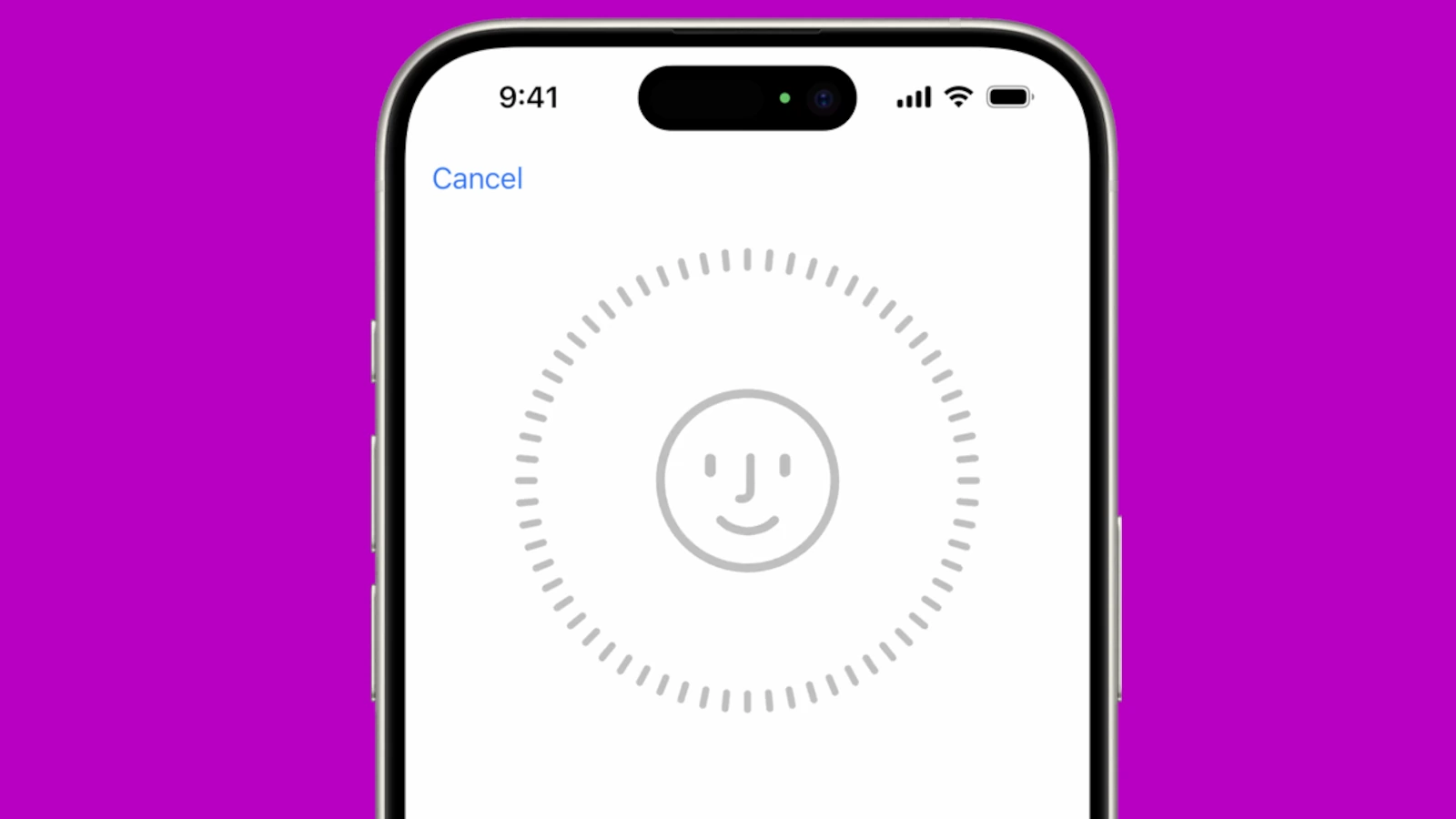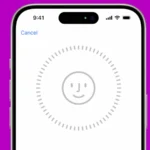Privacy gets stronger with iOS 18’s app locking features. Users can now lock any app on their iPhone using Face ID by long-pressing the app icon and selecting “Require Face ID” from the quick actions menu. This simple yet powerful security feature adds an extra layer of protection to sensitive apps.
Apple’s latest update brings enhanced privacy controls to iPhone users who want to keep certain apps private. The feature works seamlessly with Face ID and passcode authentication, letting users secure individual apps even when their phone is unlocked.
The process takes seconds to set up and applies to both third-party and built-in apps. Users who share their devices or want additional security for banking, messaging, or photo apps will find this feature particularly useful.
How to Lock Apps Using Face ID on iPhone
Using Face ID to lock apps adds an extra layer of security and privacy, ensuring only you can access sensitive apps like messaging, banking, or photo apps. Here’s how to enable and use Face ID to lock apps on iPhones running iOS 18 or later.
1. Check Your iPhone Compatibility
- Face ID app locking requires iOS 18 or later.
- Compatible devices include iPhone X and newer models with Face ID hardware.
2. Enable Face ID for App Locking
For Native Apple Apps (like Notes or Health):
- Open Settings.
- Scroll down and tap the app you want to lock (e.g., Notes).
- Tap Use Face ID (or Require Face ID).
- Toggle it ON.
For Third-Party Apps:
- Apps must support Face ID lock natively.
- Open the app’s Settings inside the app.
- Look for Privacy, Security, or Face ID options.
- Enable Face ID lock as directed.
3. Lock Any App via iOS 18 System Settings
Apple introduced a system-wide app locking feature in iOS 18:
- Open Settings.
- Tap Face ID & Passcode.
- Enter your passcode.
- Scroll to App Access Control or App Lock.
- Tap Add Apps.
- Select the apps you want to lock with Face ID.
- Once added, these apps will require Face ID authentication every time you open them.
4. Using Screen Time to Lock Apps (Alternative for Older iOS Versions)
If you don’t have iOS 18 or the app doesn’t support Face ID locking:
- Go to Settings > Screen Time.
- Tap App Limits > Add Limit.
- Select the app(s) you want to lock.
- Set a minimal time limit (like 1 minute).
- Enable Use Screen Time Passcode.
- After the limit is reached, the app requires the passcode to open, indirectly locking it.
5. Tips for Using Face ID App Locking
- Make sure Face ID is set up and working: Settings > Face ID & Passcode.
- Keep your face unobstructed for reliable recognition.
- If Face ID fails, you can always use your passcode to unlock apps.
- Locking apps does not sync across iCloud devices; you must set it up on each device.
Summary
Locking apps with Face ID on iOS 18+ is easy and enhances your privacy. Use the system-wide app lock feature or app-specific Face ID settings to secure your sensitive apps. For older iOS versions, Screen Time limits provide a workaround.
References
- Apple Support – Lock or hide an app on iPhone
- Tom’s Guide – How to protect your apps with Face ID in iOS 18
- The Mac Observer – How to Lock Apps With Face ID on iOS 18
Key Takeaways
- Face ID app locking works on any iPhone app through a simple long-press menu
- The security feature remains active even when the device is unlocked
- Users can easily toggle app-specific Face ID protection on or off
Implementing Face ID for App Security
Face ID provides a secure biometric authentication system for protecting sensitive apps on iPhone devices. Apple’s facial recognition technology lets users lock individual apps and control access through biometric verification.
Setting Up Face ID Authentication
Users must first enable Face ID on their iPhone in Settings. This requires scanning their face from multiple angles to create a unique facial signature.
For iOS 18, users can lock individual apps by long-pressing the app icon on the Home Screen and selecting “Require Face ID.” A confirmation prompt appears to verify the setting.
The device passcode serves as a backup authentication method if Face ID is unavailable or fails to recognize the user’s face.
Managing Access to Sensitive Apps
Screen Time offers granular control over app access. Users can set restrictions for specific apps like WhatsApp, Facebook Messenger, and financial applications.
Family Sharing participants can manage app access across linked accounts. Parents can restrict children’s access to sensitive content and applications.
Apps locked with Face ID require authentication each time they’re opened. The lock remains active even after device restart.
Customizing Lock Screen Actions and Automations
The Shortcuts app enables custom Face ID authentication workflows. Users can create Personal Automations that trigger when specific apps are opened.
Lock Screen Actions provide quick access to protected apps. Custom actions can be configured to require Face ID verification before execution.
iOS automation rules can be set to require Face ID confirmation before running specific tasks or opening designated apps.
Enhancing Privacy with Hidden Apps and Folders
The App Library organizes and conceals sensitive applications. Users can remove apps from the Home Screen while keeping them accessible through search.
Hidden folders add an extra privacy layer. Face ID verification can be required to access these folders and their contents.
The Photos app supports a Hidden album that requires Face ID authentication. This feature protects private photos and videos from unauthorized access.
Sensitive Content Protection: Apps containing financial data, personal messages, or confidential information benefit from Face ID security.
Frequently Asked Questions
Face ID app locking provides security features to protect sensitive apps on iPhones through biometric authentication. Users can customize settings and troubleshoot common issues to maintain reliable access control.
What steps are required to set up Face ID for app locking on an iPhone?
Long-press any app icon on the Home Screen until the quick actions menu appears. Select “Require Face ID” from the menu options.
Tap “Require Face ID” again in the confirmation prompt to enable the security feature for that app.
The iPhone will ask for Face ID or passcode authentication each time the protected app is opened.
Is there a way to use Face ID to secure apps on Android devices?
Android devices do not support Face ID, as it is an Apple-exclusive technology. Android phones use their own facial recognition systems.
Some Android manufacturers offer similar features through their custom security settings.
Can I lock multiple apps at once using Face ID, or must I do it individually for each app?
Users must enable Face ID protection for each app individually. There is no batch selection option available.
The process takes just a few seconds per app, making it quick to secure multiple apps.
What should I do if Face ID isn’t recognizing my face when attempting to unlock an app?
Clean the TrueDepth camera and sensors at the top of the iPhone screen.
Ensure proper lighting and position the phone at eye level for optimal recognition.
If problems persist, try resetting Face ID in Settings and set it up again.
Are there any third-party apps that offer more robust Face ID locking features than native options?
Third-party app lockers exist but cannot access Apple’s secure Face ID system directly.
Native iOS Face ID protection provides the most secure and reliable option for app locking.
How can I troubleshoot issues with Face ID not working for specific applications?
Check if the app has the latest updates installed, as outdated versions may have compatibility issues.
Go to Settings > Face ID & Passcode to verify the app has proper permissions enabled.
Reset Face ID settings if problems continue across multiple apps.







